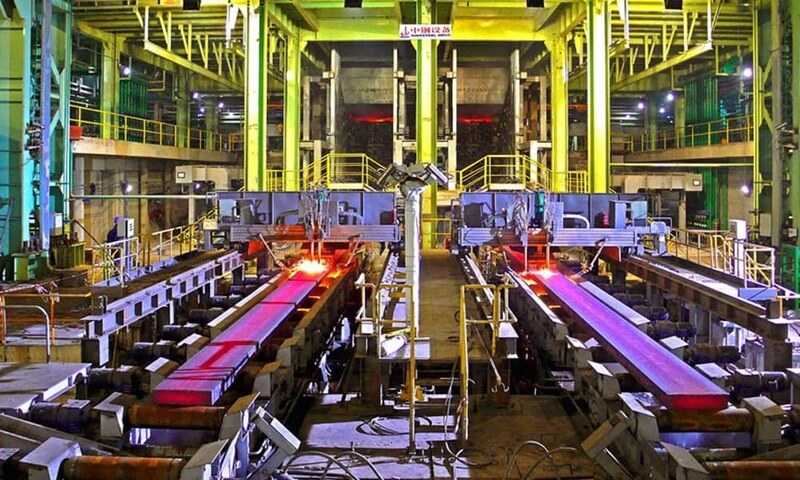ISLAMABAD: The Russian government has proposed two options for the revival of the ailing Pakistan Steel Mills (PSM): one blast furnace model will cost USD 1.91 billion and the other is based on Electric arc furnace (EAF) technology that will cost USD 1.05 billion.
During the Special Assistant to the Prime Minister (SAPM) on industries and production, Haroon Akhtar Khan’s official visit to Moscow in July, Pakistan signed an agreement with Russia to revive and expand the Pakistan Steel Mills project in Karachi, which was originally built in 1973 with Soviet assistance.
According to officials privy to the developments, Russian authorities have forwarded the proposals to the Ministry of Industries and Production on the subject, saying that revival of the current mill on blast furnace model will one-time cost of USD 1.91 billion, while constructing a new mill based on Electric arc furnace (EAF) technology will cost USD 1 billion for which scrap will be imported.
As per the officials cost of constructing a new mill based on Electric arc furnace (EAF) technology is almost half thatof the revival of the mill based on the blast furnace model, but in the long run first method will prove cost-effective as compared with the EAF model, which is totally based on importedscrap. In the blast furnace model, Pakistan can use locally available iron ore for steel production, while the alternate model is totally dependent on imported steel scraps. The PSM management this year so far has reduced PSM expenditures by Rs4.62 billion.
As per senior officials, Pakistan,despite being blessed with considerable reserves of iron ore with an estimated reserve of 1.887 billion tons, is forced to import around $6 billion of iron, steel,and scrap annually. There is a perpetual gap between domestic production and demand for iron and steel. For the last year, the gap is estimated at 3.1 million tons, officials added.
Pakistan’s per capita steel consumption level is below even that of developing countries, indicating significant growth potential over the medium and long term. The official said that the efficiency of Pakistan’s steel industry is limited as it is segmented (600 small units) and based on old and inefficient technology.
Meanwhile, SPAM on Industries and Production Haroon Akhtar Khan held an important meeting with the Federal Minister for Maritime Affairs, Muhammad Junaid Anwar Chaudhry, to discuss and review the PSM revival plan. During the meeting, a detailed proposal was presented to establish Pakistan’s first “Sea to Steel Green Maritime Industrial Corridor” at Port Qasim in connection with the revival of PSM through the use of advanced technology.
Chaudhry said the initiative could reshape Pakistan’s industrial and maritime sectors by integrating ship recycling, steel manufacturing, and sustainable industrial practices into one ecosystem.
Pakistan currently imports around USD 6 billion worth of steel annually, with demand expected to grow by nearly 6 percent each year through 2035, according to a World Bank report. The minister noted that the proposed project could reduce steel imports by up to 20 percent, potentially saving the country over USD 13 billion in the next decade.
At the heart of the proposal is the revival of the long-idle Iron Ore and Coal Berth (IOCB) at Port Qasim, inactive since 2015. The plan envisions converting the facility into a modern ship recycling and repair complex featuring a large floating dock capable of servicing Aframax-class vessels.
Chaudhry explained that steel recovered from dismantled ships would either be supplied to Pakistan Steel Mills or reprocessed at a new facility near Port Qasim into high-grade industrial steel.
“This approach,” he said, “would reduce dependence on imported raw materials, conserve foreign exchange, and support the country’s domestic steel and shipbuilding industries”.
The minister added that the same dock could cater to the Pakistan National Shipping Corporation (PNSC), which currently relies on foreign shipyards for maintenance. Developing local repair capacity, he said, would help cut operational costs and strengthen maritime infrastructure.
Special Assistant Haroon Akhtar Khan welcomed the proposal, emphasising the need for inter-ministerial cooperation.
“We must work together for Pakistan’s economic growth and the welfare of our people,” he said, expressing confidence in the project’s transformative potential.
Commodore (R) Muhammad Jawad Akhtar, Technical Advisor Maritime at the Ministry of Maritime Affairs, endorsed the plan, calling it a practical expression of the government’s Blue Economy vision. He described the corridor as “an integrated model of sustainable ship recycling, green steel manufacturing, and maritime industrialization.”
“Once operational, the Sea to Steel Green Corridor will attract investment, create jobs, and facilitate technology transfer while positioning Pakistan as a regional maritime hub,” he added.
The meeting concluded with an agreement to finalise the project’s financial and technical frameworks in consultation with national agencies and international partners. A formal presentation to key stakeholders is expected in the coming weeks.
The meeting was attended by senior officials from both ministries, along with representatives from leading Chinese maritime companies.
Copyright Business Recorder, 2025


